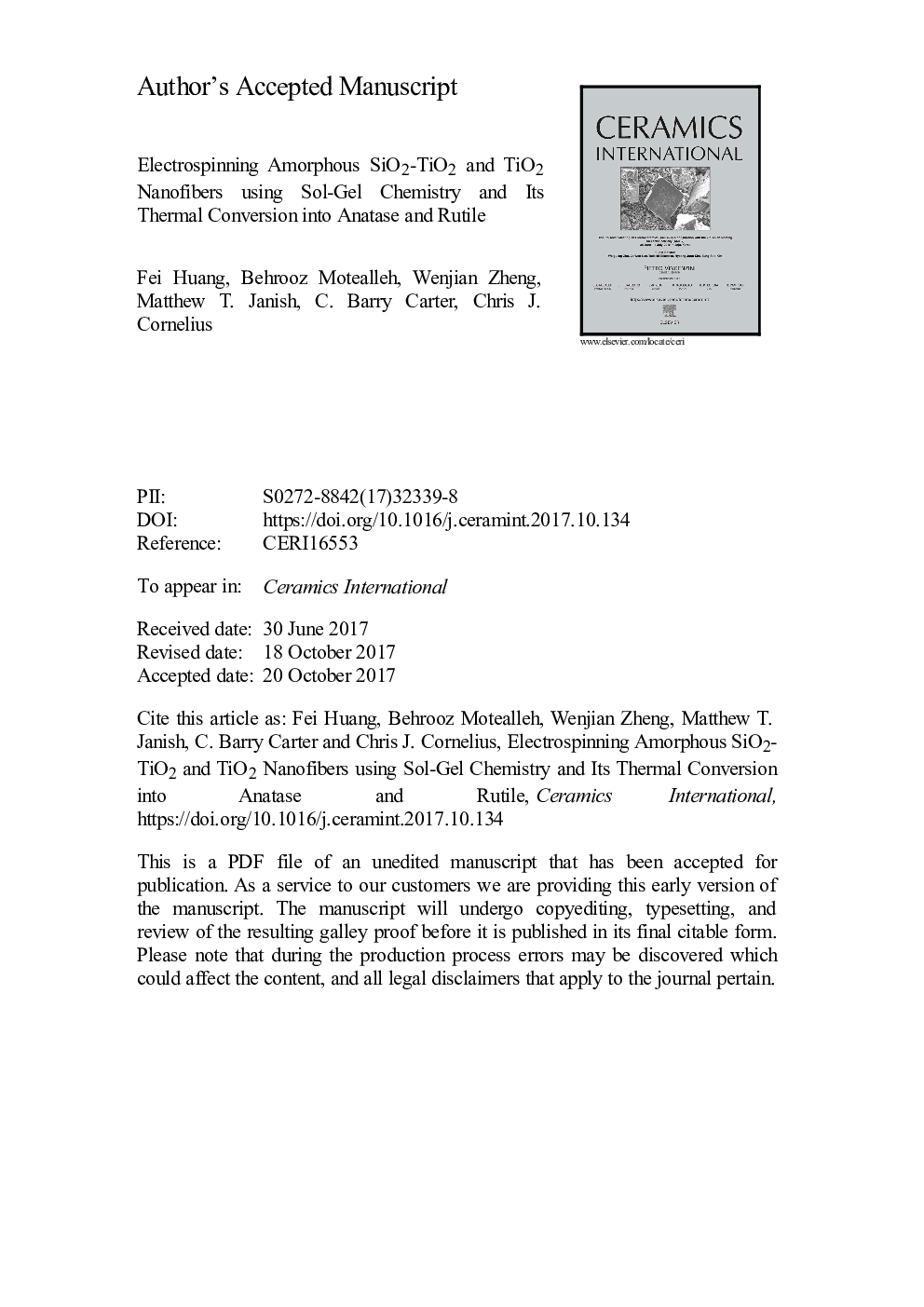| Article ID | Journal | Published Year | Pages | File Type |
|---|---|---|---|---|
| 7887979 | Ceramics International | 2018 | 33 Pages |
Abstract
SiO2-TiO2 nanofibers were electrospun from partially hydrolyzed tetraethyl orthosilicate, and titanium isopropoxide using sol-gel chemistry. SiO2-TiO2 sol phase diagrams were created summarizing the role of composition on solution homogeneity and electrospinnability. Inorganic nanofiber spinnability was studied without the addition of any organic polymer, oligomer, gelator, or binder. TiO2 concentration within SiO2-TiO2 fibers ranged from 25 to 100Â mol%. SiO2, SiO2-TiO2, and TiO2 nanofiber structures were investigated using scanning electron microscopy and transmission electron microscopy. Inorganic fiber spinning was highly dependent on sol reaction temperature, time, and solution composition. At high TiO2 concentrations, twisted and ribbon-like nanofibers with dumbbell-shaped cross-sections were observed. This was attributed to jet branching and splitting during electrospinning. Electrospun fibers were amorphous at room temperature, but thermally converted into crystalline anatase, which underwent additional structural changes at higher temperatures into rutile. This anatase-rutile thermal phase transformation was highly dependent upon TiO2 concentration. Nanofiber composition, thermal stability, and crystalline structures were characterized by energy-dispersive X-ray spectroscopy; Fourier transform infrared spectroscopy, thermal gravimetric analysis, and wide-angle X-ray diffraction.
Related Topics
Physical Sciences and Engineering
Materials Science
Ceramics and Composites
Authors
Fei Huang, Behrooz Motealleh, Wenjian Zheng, Matthew T. Janish, C. Barry Carter, Chris J. Cornelius,
